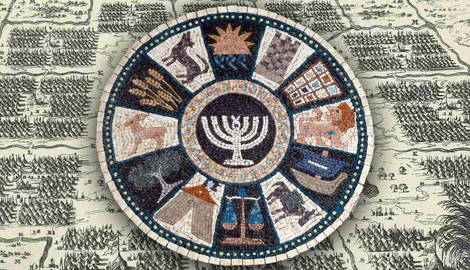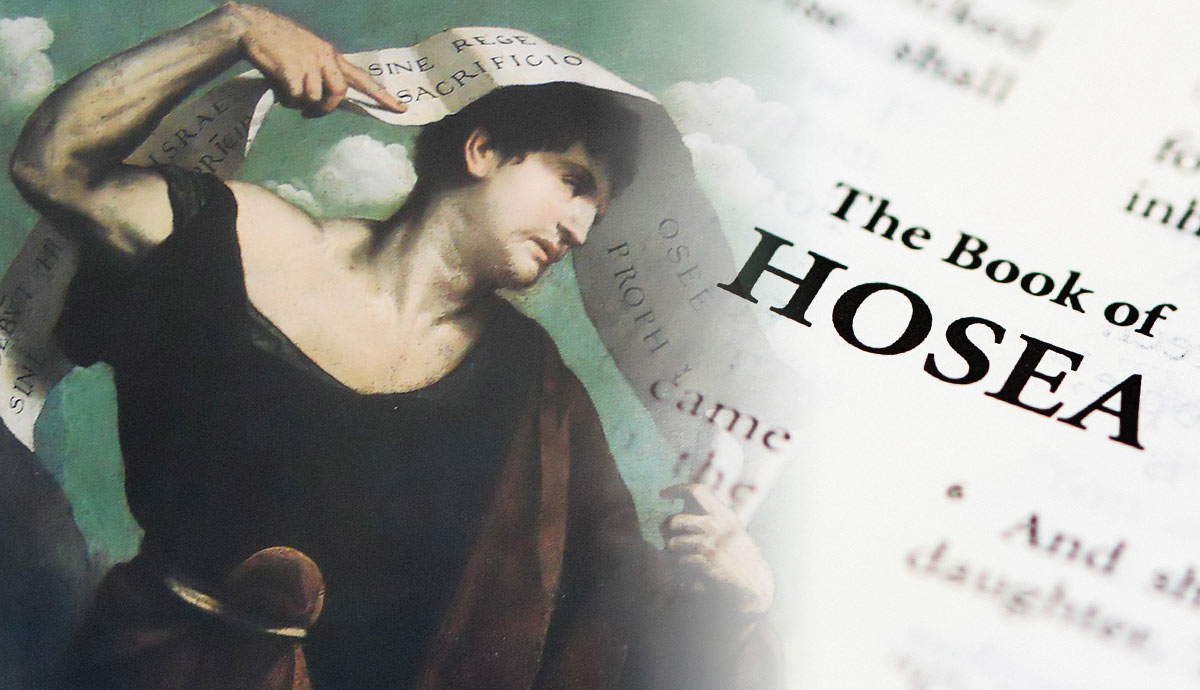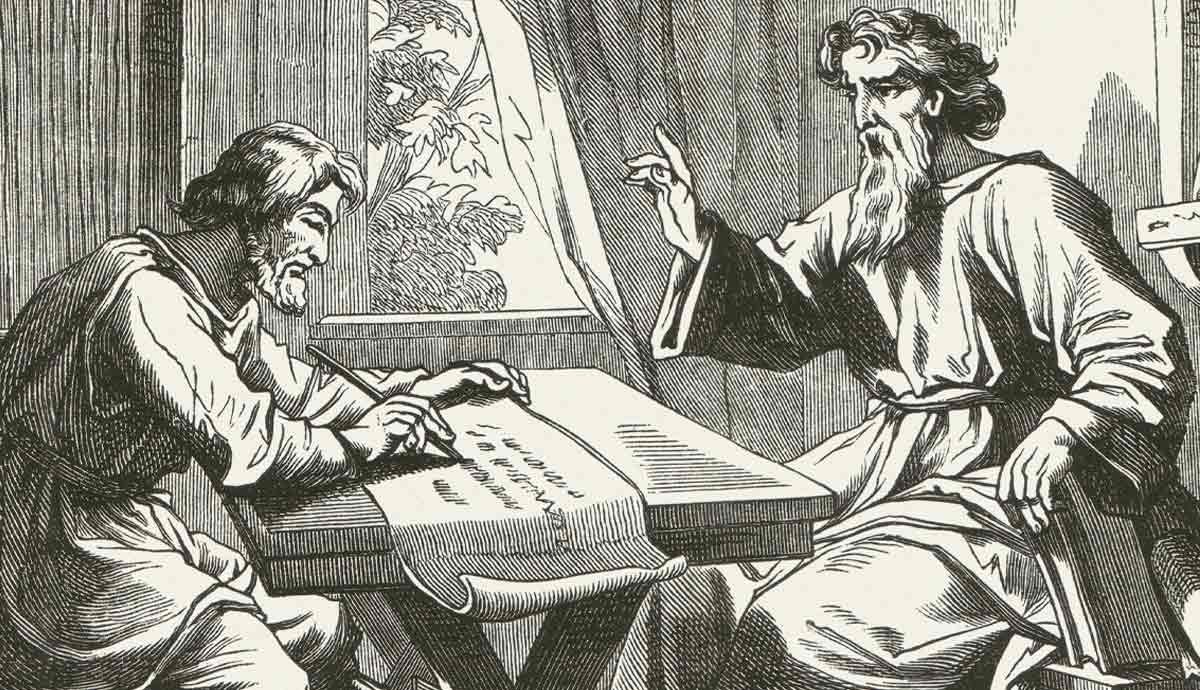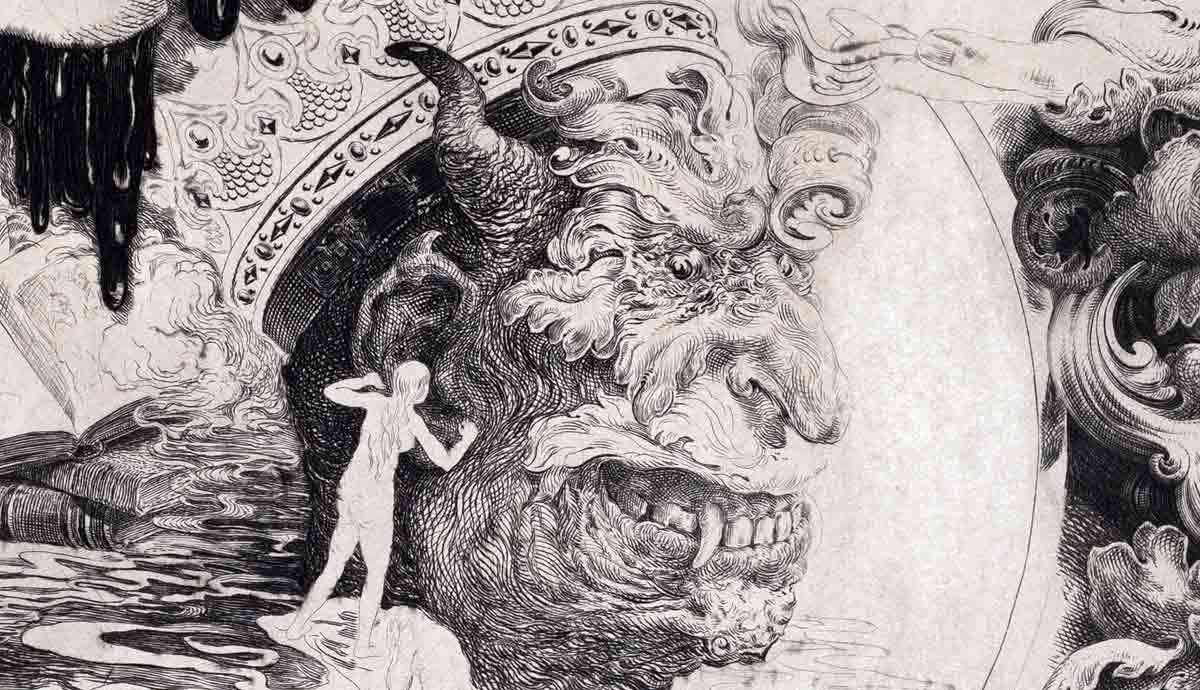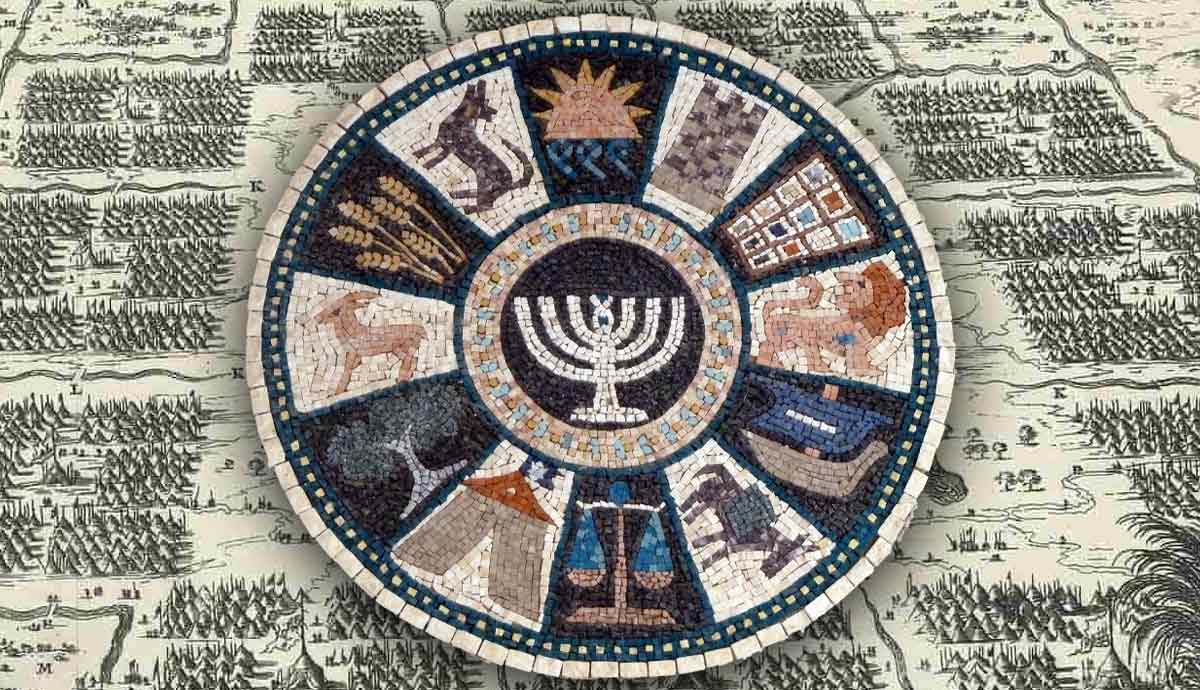
There are several lists of the tribes of Israel in the Bible. Many readers do not realize that these lists often differ from one another. To understand these anomalies in later lists, we must ask: How were the twelve tribes of Israel formed? Clarity on that issue will guide us in recognizing differences in later lists that claim to reflect the tribes of Israel. Considering the names omitted and those inserted, we may be able to understand the motivations behind these changes. These changes could not have been arbitrary.
The Original Twelve Tribes

Jacob, son of Isaac, son of Abraham, was the father of the twelve tribes of Israel. In the Bible, we are told that a divine being he wrestled with changed Jacob’s name. In Genesis 32:28, the being, initially only described as a man, says: “Your name shall no longer be called Jacob, but Israel, for you have striven with God and with men, and have prevailed.” The twelve tribes of Israel, therefore, collectively carry the name of their father.
Jacob had twelve sons with his four wives. With Leah, he had Ruben, Simeon, Levi, Judah, Issachar, and Zebulon. With Bilhah, a handmaid of Rachael, Jacob had Dan and Naphtali. With Ziphah, a handmaid of Leah, he had Gad and Asher. With Rachael, his beloved wife, he had Joseph and Benjamin (see Genesis 35:23–26). Jacob blessed each one of them shortly before his death. The Bible then states that “all these are the twelve tribes of Israel” (Genesis 49:28).
Israel in the Historical Books of the Old Testament

Ruben, as the eldest son, used to be listed first. After he had sexual relations with Bilhah, a concubine of his father Jacob, he lost his preeminent place to the fourth son of Jacob, Judah. Simeon and Levi, the second and third sons, were skipped over due to their propensity for violence (Genesis 49:5). Judah is, however, never listed first in any of the Old Testament lists of the tribes of Israel. The tribe of Judah was prominent in the sense that David and Solomon came from them before Israel split into a Northern and Southern kingdom. This familial lineage formed the basis for the tribal identity of Israel, which featured strongly throughout all Israelite history.
The tribe of Levi were assigned to serve as priests among the tribes of Israel. The camps of the Israelites were arranged according to these tribes, with three tribes camping on each side of the Tabernacle. This arrangement appears again at the gates of the New Jerusalem, which will be discussed shortly.

The arrangement of the tribes indicates a modification to the earlier twelve-tribe division. The tribe of the Levites was not assigned a spot on any side of the Tabernacle. They were to reside among the other tribes. Rather than being one tribe short, the descendants of the sons of Joseph—Ephraim and Manasseh—were recognized as two distinct tribes, bringing the number of tribes encamped around the Tabernacle back to twelve. Joseph received a double portion from his father, which is reflected in this list of the tribes of Israel.
Joshua divided the promised land in the same way. The Levites resided among the other tribes in cities of their own. They had exclusive use of the land surrounding their residences. They received no allotment of a portion of the land like the other tribes had. This would facilitate their ministry as priests among the tribes of Israel. To make up the number twelve, the tribes of Ephraim and Manasseh each received a portion of land as inheritance.
The Twelve Tribes in Ezekiel

The order of the tribes of Israel in the Book of Ezekiel is unique. The text explains that it takes a geographical approach to listing the tribes. This is a vision Ezekiel received, and we should not compare it to the physical allotment of portions of land detailed in the Book of Joshua. Ezekiel 47 states that Joseph received a double portion, so we can anticipate that his name will not appear in the list detailed in chapter 48, but his sons, Ephraim, and Manasseh, will.
This list starts with the tribe to the northernmost extreme and works its way down. It lists the tribes and details the size of the allotted portions. The list contains the same names as in Numbers 1, which omits Levi and Joseph but includes Ephraim and Manasseh.
The Tribes of Israel in Revelation 7

Revelation 7 relates how four angels will hold back the four winds until a fifth angel has sealed the 144,000. The 144,000 consists of 12,000 people from each of the tribes of Israel. Some argue that this list speaks to literal Israel, while others believe it represents spiritual Israel. Whichever view is valid, the list in Revelation 7 is unlike any of the Old Testament lists.
Here, Judah is listed first. Since David and Solomon, later kings of the Southern kingdom, came from Judah, and Jesus was also from the tribe of Judah, this prominent position is not a surprise. The omissions and inclusions on this list are significant and surprising.
Some Old Testament lists omitted Joseph and Levi and replaced them with Ephraim and Manasseh. The Revelation 7 list omits Dan and Ephraim while including Levi and Joseph. Menasseh, the son of Joseph, remains on this list, making it a truly unique representation of the tribes of Israel.

Such a diversion from the Old Testament lists must have had a good reason, though Revelation 7 does not offer any motivation for the change. Considering the character of Dan and Ephraim, the reason for their exclusion probably rests in their apostasy.
After entering the promised land, the tribe of Dan fell into idol worship (Judg. 18:27-31). Their practices even competed with that of the Temple in Jerusalem (1 Kings 12:29-30; 2 Kings 10:29). Later, the prophet Jeremiah commented on the tribe of Dan in a way that some Rabbis interpreted as proof that the Antichrist would come from the tribe of Dan (Jer. 8:16).
Similarly, the Ephraim fell into idolatry (Hos. 4:17; 8:9-11; 12:1; cf. 2 Chron. 30:1, 10). Psalms has the following to say about the Ephraim: “The Ephraimites, armed with the bow, turned back on the day of battle. They did not keep God’s covenant, but refused to walk according to his law.” (Psa. 78:9-10). The psalmist then details how God revealed himself to the tribe of Ephraim, but they still turned away from Him. Ephraim also joined with the gentile nations against Judah (Isa. 7:2-9), which may have contributed to the exclusion of this tribe from the list John provides in Revelation 7.
The Tribes of Israel in Revelation 21

Revelation 21 also mentions the twelve tribes of Israel. The New Jerusalem is said to have twelve gates, each named after the twelve tribes of Israel (Revelation 21:12-13). Each of the four sides of the city had three gates. This reflects how the Israelites camped around the Tabernacle in the wilderness.
The tribes of Israel are not listed, so it is not possible to compare this list with either the Old Testament list or that of Revelation 7. It is likely, however, that the tribes listed in Revelation 7 are also in view here.
Comparing Tribe Lists

When we compare the various instances in which the Bible mentions the tribes of Israel, we find that the tribes identified change significantly. The number of tribes listed, however, never differs.
The prominence of twelve is significant, evidently more so than the tribes that make up the twelve. This number connects the twelve tribes of Israel with the twelve disciples in the gospels and the twelve apostles associated with the foundations of the new Jerusalem in Revelation 21.
Technically, the lists total 14 tribes when put together: the twelve sons of Jacob (Israel) and the two sons of Joseph, Ephraim, and Manasseh. The omission of Levi in the appropriation of land in the Book of Joshua does not mean that they were no longer a tribe of Israel. Listing Joseph and his son Menasseh in Revelation 7 seems inconsistent in principle but highlights the importance of the number twelve in the Bible.
Conclusion

Initially, the tribes of Israel consisted of the twelve sons of Jacob, or Israel. The later lists of the tribes of Israel do not follow this identification. It allows for the sons of Joseph to make up the twelve when Joseph and Levi are not assigned a portion of land to inherit. In the New Testament, the list changes again, having Levi and Joseph on the list while retaining Menasseh and losing Ephraim and Dan.
How were the twelve tribes of Israel formed? The answer is that it depends on the context. When speaking of the original tribes, it was the twelve sons of Jacob. When dividing the promised land into portions and allotting them to each tribe, Ephraim and Menasseh reflect the double portion Jacob receives. Levi, though still a tribe, does not receive a portion to allow them to facilitate their function as priests to the Israelites. In the New Testament context, the tribes of Israel seem to be formed based on faithfulness to God, which may indicate that they represent spiritual Israel rather than the literal Israel of old.
